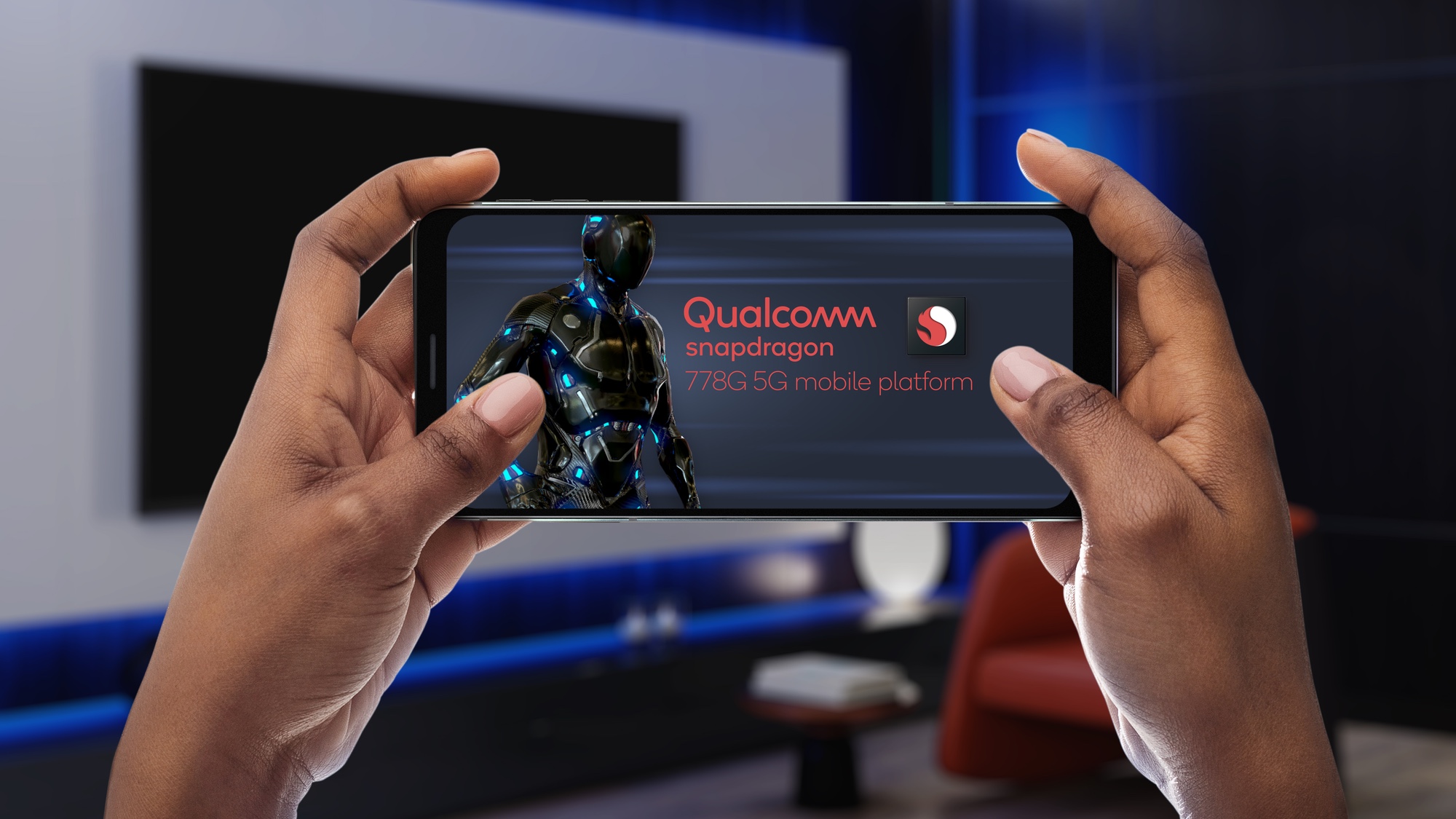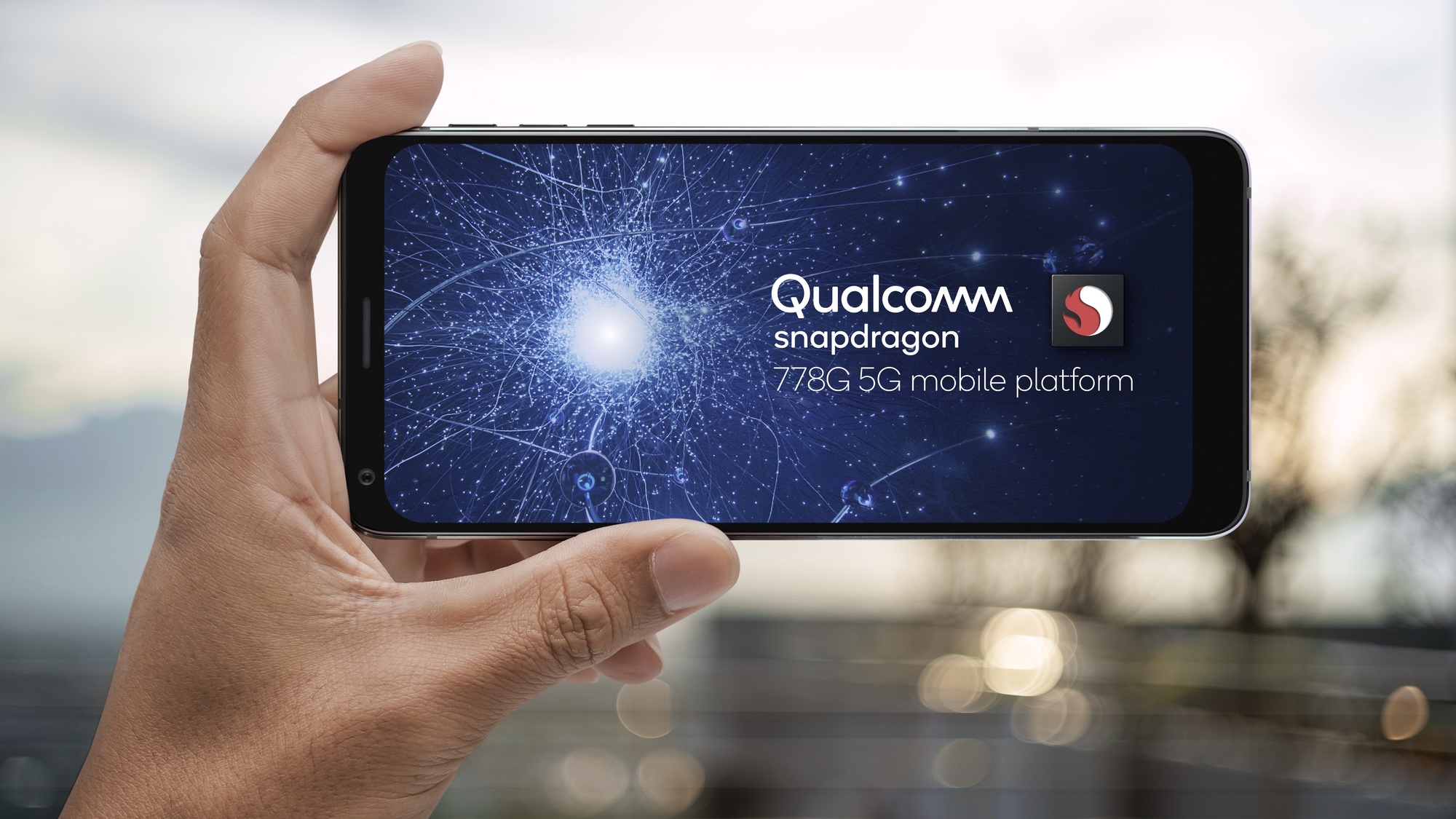Qualcomm unveils Snapdragon 778 5G to power next wave of affordable flagships
Meet the Snapdragon 778G 5G, which boasts advanced camera and gaming features

After the first wave of 5G phones debuted with astronomical price tags a couple years ago, more affordable 5G handsets are becoming a more common sight. Qualcomm wants to make sure that continues, as it cranks out more silicon designed for phones that are just a step or two behind flagship models.
The chip maker unveiled the Snapdragon 778G 5G system-on-chip today (May 19) as part of its annual 5G summit. The new chipset gives phone makers an additional option for powering high-end and midrange devices, joining the Snapdragon 780G introduced by Qualcomm in March.
- The best 5G phones right now
- Best gaming phones
- Plus: Battery killers — these 20 apps are the worst for your phone
While not aimed at flagship phones like Samsung's Galaxy S series, the Snapdragon 778G does deliver some performance pop. Qualcomm promises a 40% boost in performance from the Kryo 670 CPU over the Snapdragon 768G released a year ago. Similarly, the Adreno 642L GPU will speed up graphics rendering by 40%.
But the story here is added 5G connectivity. The Snapdragon X53 5G modem included on the chipset works with both millimeter wave and sub-6GHz 5G networks, so the phones powered by the Snapdragon 778G should be available through multiple carriers.
Qualcomm is also touting the camera, gaming and AI capabilities of its latest silicon, claiming the Snapdragon 778G brings premium capabilities to phones that aren't necessarily flagship devices.
To that end, the Snapdragon 778G features the first triple ISP in Qualcomm's 7 series chipsets. The Spectra 570L image signal processor can capture video from three cameras at once, such as the main, ultrawide and selfie cams on a phone. There's also support for computational HDR video capture, which means improved color, contrast and detail in the videos you shoot with your Snapdragon 778G-powered smartphone.
On the gaming front, besides faster graphics rendering, the Snapdragon 778G includes Snapdragon Elite Gaming features. Two newcomers to 7 series chip are support for variable rate shading, which allows mobile games to run faster at higher resolutions, and Game Quick Touch. That latte feature reduces touch latency times, with Qualcomm promising a 20% improvement on responsiveness.
Sign up to get the BEST of Tom's Guide direct to your inbox.
Get instant access to breaking news, the hottest reviews, great deals and helpful tips.

Like the Snapdragon 780G, the 778G features Qualcomm's 6th generation AI engine, which doubles the performance over previous generations. That can support features like blurred backgrounds on video calls and adjusting the volume of those calls based on the background noise around you.
A host of phone makers have committed to using the Snapdragon 778G in upcoming handsets. Motorola joins several China-based phone makers like Oppo, Xiaomi, Realme, Honor and iQOO. Qualcomm expects phones powered by the Snapdragon 778G 5G to start appearing in the next couple months.
That's good news for consumers looking for powerful 5G-capable phones that don't necessarily feature high prices. That was a fact of life when the first 5G phones began to emerge two years ago, but over time, costs have come down.
Samsung recently introduced a trio of new 5G phones, all of which cost less than $500, and the Nord handsets from OnePlus also have introduced us to 5G on a budget. Snapdragon 778G-powered phones may not sell at those prices, but they'll should be cheaper than flagships like the Galaxy S21 or OnePlus 9.
The unveiling of the Snapdragon 778G was just one of the announcements Qualcomm made during the opening of its 5G Summit. The chip maker also announced upgraded features for its Snapdragon X65 5G modem that included extended mmWave capabilities, such as mmWave support in standalone mode. That's seen as a boost for adoption of the high-speed 5G technology in places like China.
Additionally, Qualcomm announced X65 and X62 reference designs that can help device makers add 5G connectivity to other electronics including PCs and laptops, mixed reality headsets and broadband equipment among other gear.
- When is 5G coming to you? The definitive guide
Philip Michaels is a Managing Editor at Tom's Guide. He's been covering personal technology since 1999 and was in the building when Steve Jobs showed off the iPhone for the first time. He's been evaluating smartphones since that first iPhone debuted in 2007, and he's been following phone carriers and smartphone plans since 2015. He has strong opinions about Apple, the Oakland Athletics, old movies and proper butchery techniques. Follow him at @PhilipMichaels.

